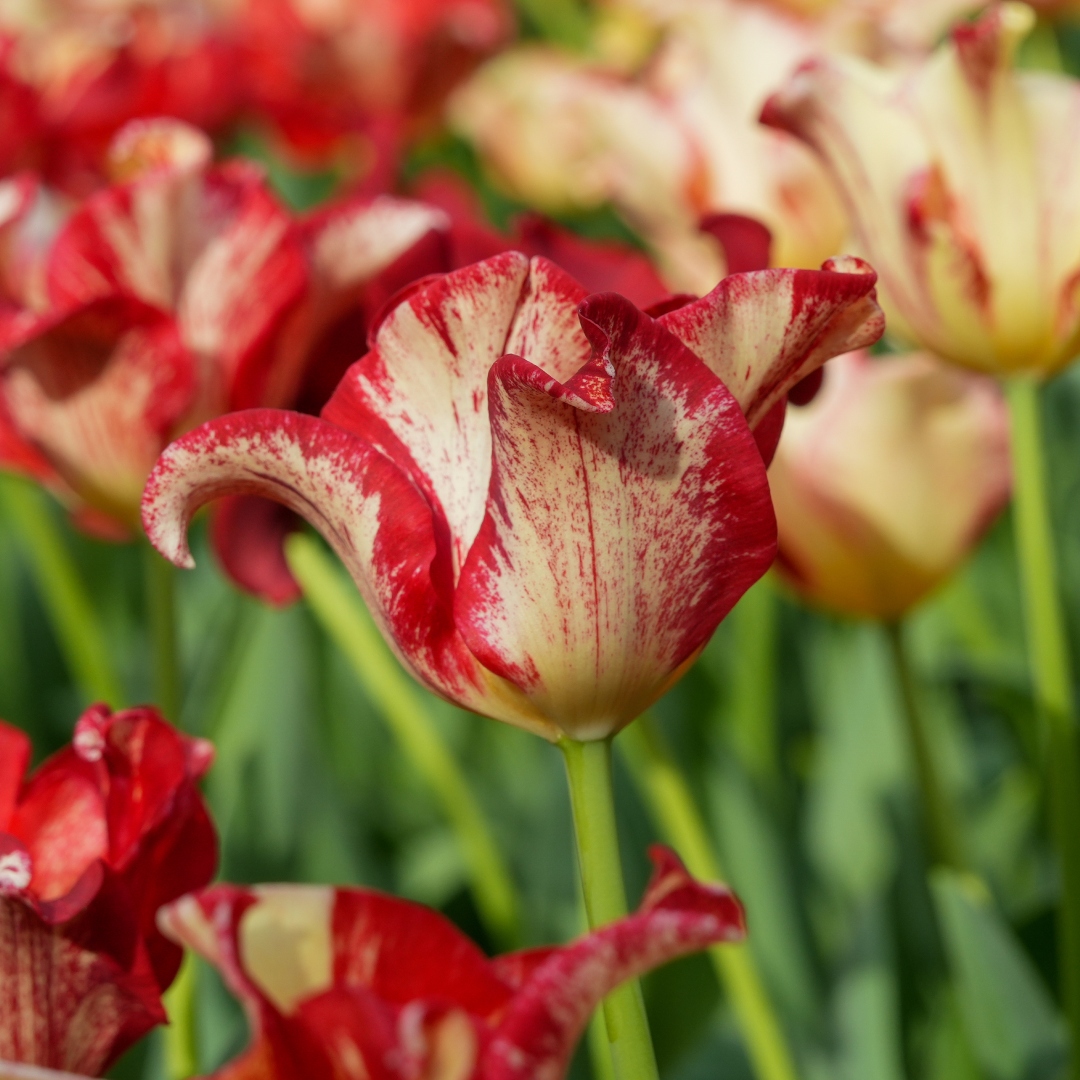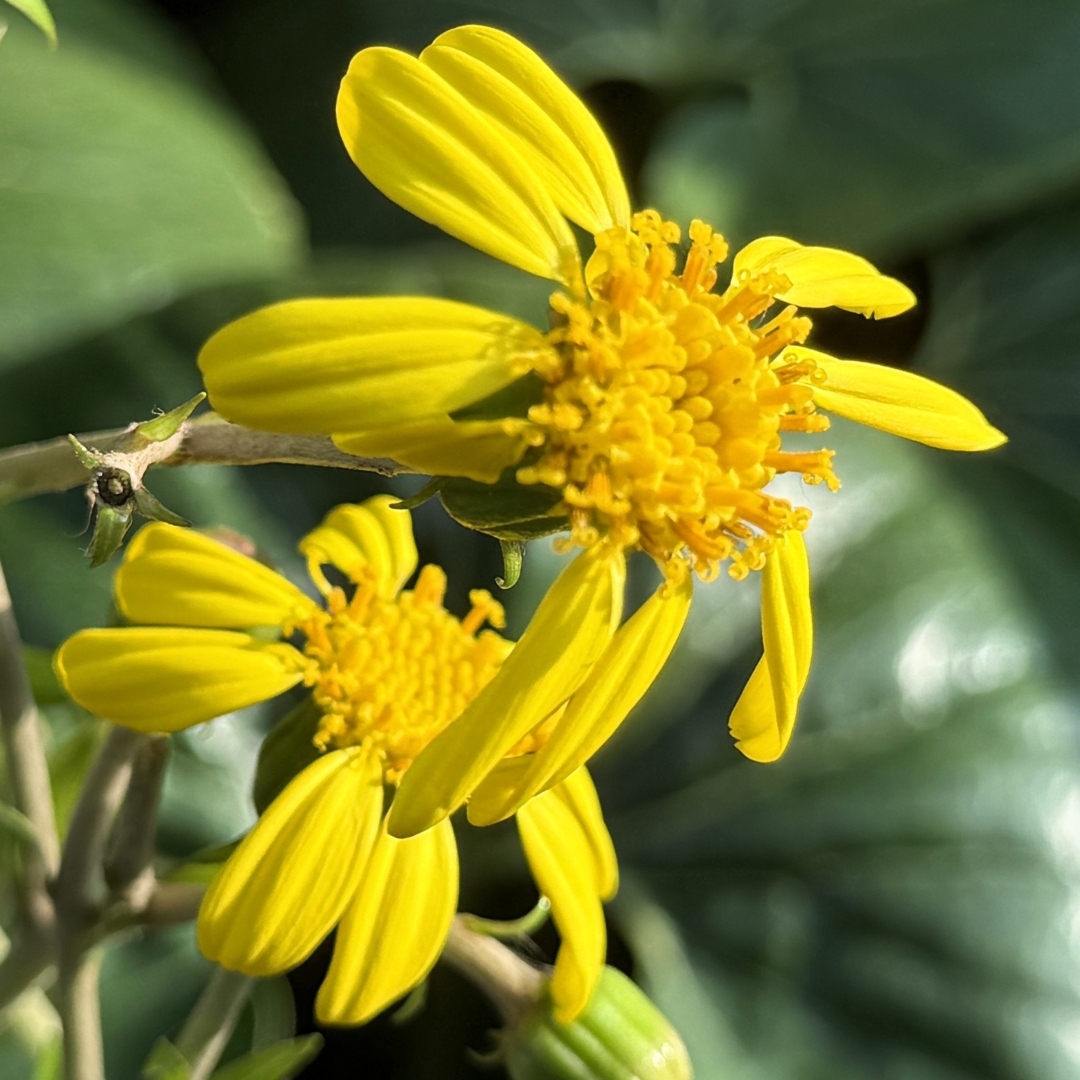Murdannia sp. aff. gigantea
Rain Garden, Sustainability Gallery, Gardens by the Bay MRT Plaza

Are you an early riser, always up with the sun and on the go? If so, there’s a whole family of flowers to match your morning energy! The dayflower family (Commelinaceae) comprises about 800 species, most of which are succulent, perennial herbaceous plants with ephemeral flowers that last for just a few hours, opening early in the morning and – hopefully not like you! – wither and wilt by around noon!
Today’s What’s Blooming feature plant is a bit of a horticultural mystery. It is definitely a member of the genus Murdannia, commonly known as dewflower, for their early bloom time and ground-hugging, creeping habit of many species, opening amid the morning dew. Distributed throughout the global tropics, Murdannia is comprised of 62 species, mostly concentrated in Asia and Africa, with six in the neotropics, across permanently or seasonally wet areas in the tropical savanna or Amazon floodplains across parts of northeastern South America.
Our dewflowers came from Thailand and bear a resemblance to the giant dewflower (Murdannia gigantea), hence their designation as Murdannia sp. aff. gigantea. The abbreviation ‘sp. aff.’ stands for ‘species affinis’, a Latin term meaning ‘species resembling’ or ‘species affiliated with’. The giant dewflower is native across a wide area, from Madagascar through India and parts of peninsular and oceanic Southeast Asia down to northeastern Australia. A perennial plant with a tufted rosette of long, leaf blades, giant dewflower bears its flowers on terminal multi-branched flowering shoots called panicles, each bearing a single flower per branch tip at a time.
 Our giant dewflower-like plants hold their wide purple flowers high above their tufted basal rosettes of leaves.
Our giant dewflower-like plants hold their wide purple flowers high above their tufted basal rosettes of leaves.
Dewflowers blooms – much like your face - are bilaterally symmetrical with organs on each side that mirror each other. Giant dewflowers – despite their name – have relatively small purplish-pink petals about a cm in length, but our Thai-sourced plants are truly giant, with flowering stalks up to 1.3 m high and petals over 2cm in length. Our plants also bear flowers that have wavy, tufted projections at the base of their anther stalks (filaments) as opposed to the brush-like arrangement of fine hairs that ring the filaments of other specimens of giant dewflower. We aren’t sure if they are representatives of a particularly tall sub-population of Murdannia gigantea, a hybrid between different species, or possibly a new species themselves!
 The dewflowers we have planted on-site have three long, translucent white sepals, three large purple or lavender petals, two stamens with lavender-bearded bases, each bearing a fertile anther, and three sterile stamens (staminodes), each bearing a sterile yellow tri-lobed anther (antherode).
The dewflowers we have planted on-site have three long, translucent white sepals, three large purple or lavender petals, two stamens with lavender-bearded bases, each bearing a fertile anther, and three sterile stamens (staminodes), each bearing a sterile yellow tri-lobed anther (antherode).
Our plants most closely resemble the giant dewflowers in parts of northwestern Thailand. Perhaps the most Insta-famous of these is in Phu Soi Dao National Park, where peak flowering periods in August and September attract the most active of floral thrill seekers to hike its mountainous pine meadows filled with giant dewflowers.
 Our giant dewflower-like plants hold their wide purple flowers high above their tufted basal rosettes of leaves.
Our giant dewflower-like plants hold their wide purple flowers high above their tufted basal rosettes of leaves.
Fortunately, you don’t have to go nearly as far! Come visit our giant dewflower-like plants in the specially-designed Rain Garden at our recently-launched Sustainability Gallery, right at the Gardens by the Bay exit of Bayfront MRT. There, you’ll find mean8ering graveled paths lined with a free-flowering, pollinator-friendly diversity of hardy plants, hand-picked to thrive and bloom just on the rainwater collected and channeled through its beds. But don’t be late – these flowers close shortly after noon!
Written by: Janelle Jung, Senior Researcher (Research and Horticulture)
A transplanted pake (Hawai'i-born Chinese), she's finding her own Singaporean roots. Every plant has a story, and Janelle helps discover and share these with colleagues and guests, hoping to spark a mutual plant passion! Ask her what plant she named her cat after!


